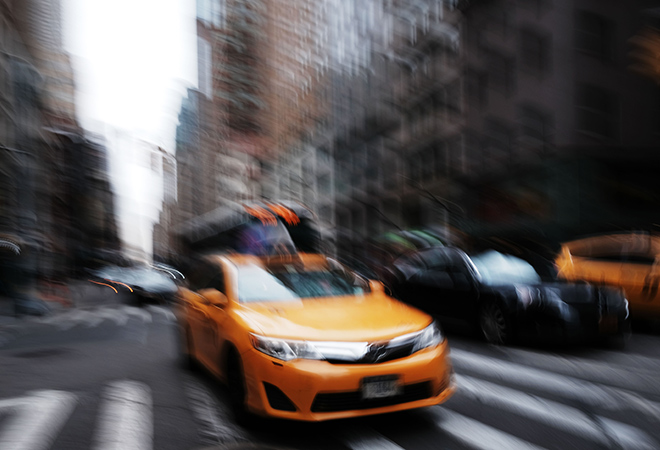
The total number of vehicles registered in Mumbai has gone up considerably in the last decade. People in Mumbai, as in other cities facing long traffic queues, pay a daily price of traffic congestion through hours lost, pollution faced and emotions disrupted. How can the lost productivity through traffic snarls be prevented? Do citizens keep on paying this huge sum or is there a way to monetise hours spent on traffic losses, perhaps improving Mumbai’s traffic efficiency at the same time?
The answer might lie in congestion pricing. The Mumbai Metropolitan Region (MMR) has for decades used tollways as a means to pay for transit infrastructure like bridges and tunnels. However, congestion pricing levies taxes or charges on private vehicles that enter specific high occupancy areas during peak hour traffic. The charges serve dual purpose: to keep a check on private vehicles on busy city streets, thereby increasing public transit ridership and to provide much-needed capital to revitalise public transit infrastructure. In cities where a congestion tax is automatically collected, this usually requires initial investments in laying out the tax collection posts and the RFID and GPS equipment to seamlessly integrate congestion pricing with the traffic network, causing no extra time losses to citizens.
Today, local authorities all over the globe, from London to New York, have begun to implement a congestion tax. Congestion tax or toll is often implemented on private cars and vehicles to encourage more users to use public transit and reduce the number of private cars on roads during peak hours.
Different cities implement variations of this broader concept, to varying success. The major examples are of Singapore, London and various cities in the European Union, like Stockholm. Recently, New York has approved a congestion pricing surcharge on certain Manhattan streets. A year ago, Delhi Lieutenant Governor Anil Baijal proposed a congestion tax along the lines of Singapore. There is momentum to rebuild consensus for the idea.
Each of these cities has a different method of congestion pricing. Let us take two examples that have proven and functional congestion pricing systems. Singapore, an Asian city and long-hailed as a model for urban growth and London, has implemented congestion pricing successfully despite the initial opposition to the tax.
Singapore has since decades used restrictive measures to control vehicle registrations. It further tackles rush hour traffic jams through a network of gantries which automatically deduct a small fee every time a car passes under it, from Monday to Saturday except on public holidays. The cars are equipped with chip equipment. In effect, since the 1970s, congestion pricing has evolved to meet the growing population and vehicular needs of this nation state.
London, on the other hand, attempts to curtail traffic in a 20 square kilometer congestion zone in the city centre. It charges a flat fee of $16 (roughly INR 1,000) to enter this zone between 7 am and 6 pm on workdays and levies an additional fee on older, more polluting vehicles. In place since 2003, the congestion tax was opposed by car owners, residents and trade organisations. However, London’s political leadership persisted and within a year, the tax showed positive results. Traffic reduced, average speed of vehicles in the zone increased and pollution levels reduced by considerable amounts.
The saga of congestion pricing in New York City began in 2008, when then mayor Bloomberg put up a proposal to introduce congestion pricing in the city. This proposal proved to be politically unfavourable and was rejected by its representatives.
The idea gained traction again in recent years, as New Yorkers look toward congestion pricing as an answer to mitigate its ailing subway and bus system. Once the congestion pricing system comes into effect, through the taxes obtained, the Metropolitan Transit Authority (MTA) hopes to further raise billions of dollars in metropolitan bonds to resurrect the ailing subway system.
In Mumbai, using monies obtained from implementing a congestion tax on private vehicles to fund improvements in the public transport system seems like a distant dream. However, congestion pricing was proposed early on, in 2008, through an affidavit by Dr. Ramanath Jha, on behalf of the Government of Maharashtra. Though the idea failed to gain necessary political traction then, this may be the last hope for Mumbai to breathe life into the BEST bus system, which has been plagued by problems. Recently, the Mumbai Metropolitan Regional Development Authority (MMRDA) invited key stakeholders to deliberate about how the Mumbai Metro region could implement a congestion tax.
Given the decentralised nature of governance in Mumbai’s urban agencies, there are several hurdles to overcome before Mumbai is successful in implementing a congestion tax. The presence of several large and small metros within the MMR – Mumbai, Thane, Navi Mumbai, Panvel, Dombivili, Kalyan, Virar and Vasai, to name a few, creates issues of locating the congestion zones. Presence of various metro and urban authorities such as the MCGM, TMC, MMRDA, MSRDC having conflicting sectoral, administrative and physical boundaries creates issues of administration and implementation. While Singapore has a strong central administration and a dynamic system of congestion pricing along different routes at different times of the day, London’s congestion pricing system has a fixed rate, fixed boundary of implementation. Both these approaches suit the political climate of the respective cities.
While there are non-infrastructure intensive changes proposed as an answer to traffic congestion in Mumbai, one approach for implementing a congestion tax in Mumbai would be to tweak the nature of administering the tax itself. A proposal to create traffic flow zones close to different metro stations was discussed at a recent conference on sustainable urbanisation. Borrowing some elements from that discussion, a proposed version of congestion pricing in Mumbai would be to create ‘Transit-Plus’ zones around all the upcoming metro stations and existing metro and railway stations. These transit-plus zones would charge a nominal tax on all private vehicles, tourist taxis (since these are typically used by ride aggregators) to enter and park at the railway/ metro stations. This may provide the emphasis that public road transit requires. If these Transit-Plus zones are developed and managed by the respective municipal corporations, the tax collected by them by pricing private vehicles would:
a.) Prove an effective deterrent to use of private transport
b.) Provide monies to the respective municipal corporations to enhance and upgrade their public transport (road) fleet of buses and salaries for their employees.
The political will to confer, arrive at a consensus and later implement the policy of congestion pricing is questionable in the MMR, with different municipal zones having different political parties at the helm. Whatever the policy Mumbai (if and when) decides to adopt and implement, we have to ensure that the outcome has a buy-in from all stakeholders – private car and vehicle owners, residents, taxi and auto rickshaw unions and ride hailing companies. Else, subverting the policy and adopting ‘jugaad’ techniques to circumvent the toll would make the tax and subsequent decongestion, pollution reduction outcomes meaningless.
Seeing cities like New York and London have spent at least a decade fine-tuning before implementing their congestion pricing policies, it is essential we start talking about congestion pricing in Mumbai now, before the promised metro routes are completely functional.
Since many of the proposed metro stations are yet to be built, adding additional ERP systems around their closest thoroughfares (as is the case of Singapore) or creating road infrastructure at intersections (as is the case of London) could be proposed and implemented. We need to start this discussion now in order to create a public consensus toward implementing congestion pricing, in a few years’ time.
Currently, many cities in India and all over the world are building and expanding metro routes. The creation of Transit-Plus hubs, if it works for Mumbai, may prove to be an effective solution to mitigate traffic and also to boost public transit ridership and infrastructure in all these cities.
The views expressed above belong to the author(s). ORF research and analyses now available on Telegram! Click here to access our curated content — blogs, longforms and interviews.




 PREV
PREV


